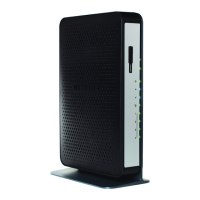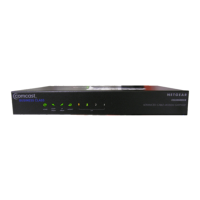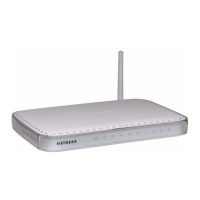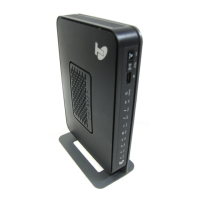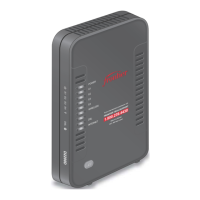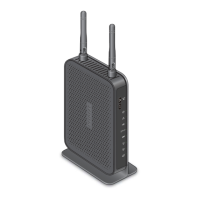Configure Advanced Features
127
AC1900, N900, and N450 WiFi Cable Data Gateways
7. In the table, select the radio button to the left of the service that you want to remove.
8. Click the Delete Service button.
The service or application is removed from the Port Forwarding Portmap Table.
Note: A default service or application is not removed from the Service Name
menu.
Application Example: Make a Local Web Server Public
If you host a web server on your local network, you can use port forwarding to allow web
requests from anyone on the Internet to reach your web server.
To make a local web server public:
1. Assign your web server either a fixed IP address or a dynamic IP address using DHCP
address reservation.
In this example, your cable data gateway always gives your web server an IP address of
192.168.0.33.
2. On the Port Forwarding / Port Triggering screen, configure the cable data gateway to
forward the HTTP service to the local address of your web server at 192.168.0.33.
HTTP (port 80) is the standard protocol for web servers.
3. (Optional) Register a host name with a Dynamic DNS service, and configure your cable
data gateway to use the name.
To access your web server from the Internet, a remote user must know the IP address
that your cable service provider assigned. However, if you use a Dynamic DNS service,
the remote user can reach your server by a user-friendly Internet name, such as
mynetgear.dns.com.
Set Up and Manage Port Triggering
Port triggering is a dynamic extension of port forwarding that is useful in these cases:
• More than one local computer needs port forwarding for the same application (but not
simultaneously).
• An application must open incoming ports that are different from the outgoing port.
When port triggering is enabled, the cable data gateway monitors outbound traffic looking for
a specified outbound “trigger” port. When the cable data gateway detects outbound traffic on
that port, it remembers the IP address of the local computer that sent the data. The cable
data gateway then temporarily opens the specified incoming port or ports and forwards
incoming traffic on the triggered ports to the triggering computer.
Port forwarding creates a static mapping of a port number or range to a single local
computer. Port triggering can dynamically open ports to any computer that needs them and
can close the ports when they are no longer needed.
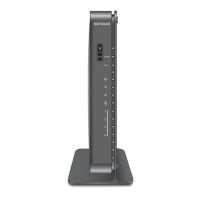
